FACE/OFF (1997)
20 years ago today, renowned Hong Kong director John Woo's best American movie debuted in US cinemas: the sci-fi action thriller Face/Off...
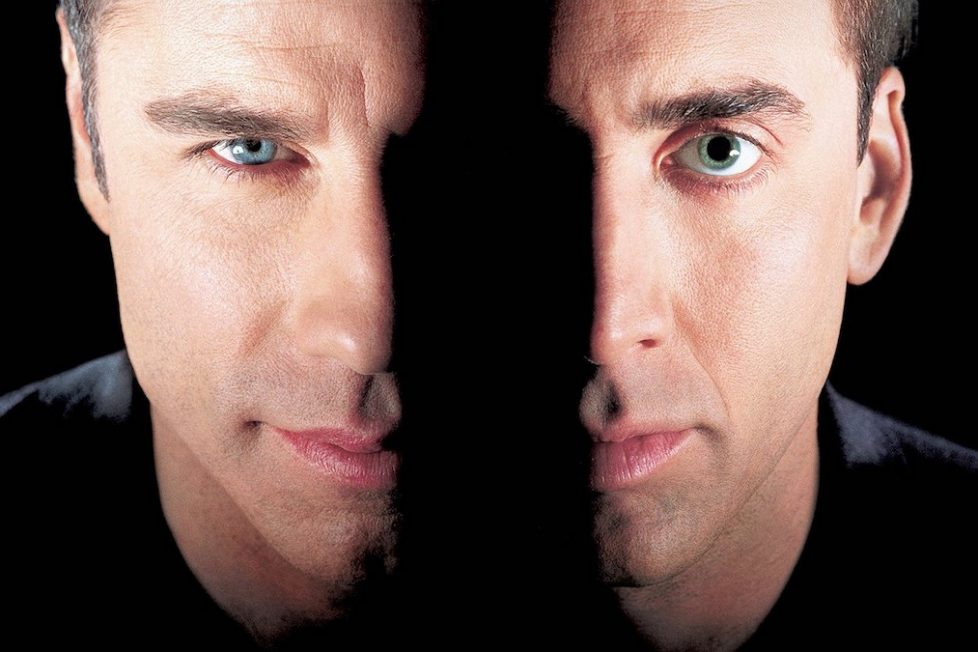
20 years ago today, renowned Hong Kong director John Woo's best American movie debuted in US cinemas: the sci-fi action thriller Face/Off...


The UK premiere of John Woo’s Face/Off was on a chilly November evening. By then, its reputation had been blowing across from America for five long months, so I was there with friends on the West End opening night. I remember we left the cinema very excited, our ears ringing, satisfied by the whole experience.
Fast-forward 20 years and, apart from a couple of VHS rentals, I had not seen it for two decades. What stuck in my mind was how funny it was, and how we’d smiled through the seemingly relentless violence. The scene I recalled most clearly was when Nicolas Cage (as terrorist Sean Archer, disguised as cop Castor Troy) slams a double dose of drugs in Han’s Loft. He laughs long and hysterically, before explaining how he wants to perform, “tiny surgery,” on Archer and, “take his face… off.” Oh, how we’d quoted Nick Cassavetes’ line “no more drugs for that man!”
The other thing that stuck in the memory was the strange, slightly creepy mannerism used in the opening sequence, when Archer runs his fingers down his son’s face. This heavy-handed signifier is repeated no less than nine times, and has since become known as the ‘face waterfall’. Overall, I remembered Face/Off as a riotous crowd-pleaser: a bit too wacky, but falling short of the high bar set by Woo’s earlier Hong Kong thrillers. How wrong I was!
For those who need reminding, Face/Off dramatises a tense life-swap between a straight-laced FBI agent named Sean Archer (John Travolta), and a psychotic terrorist named Castor Troy (Nicolas Cage).
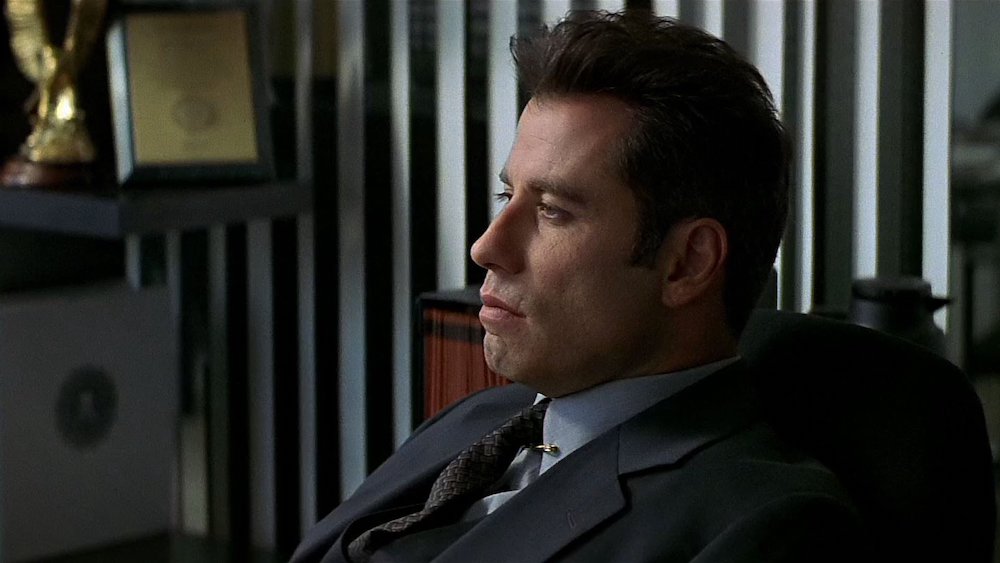
Just 10 minutes into the film, we have a superbly executed airport chase scene culminating in Archer capturing a comatose Troy. There’s plenty of slow-motion gun-fire, clip-ejections, and throwing aside of spent weapons. Cop and criminal defy gravity in acrobatic tumbles, guns blazing in both hands, or slide across the floor as if propelled by gunfire — an extended sequence that would have been a satisfying finale for any action movie, but Face/Off is only just getting started!
Troy has primed a bomb with a six-day countdown, in a location known only to him and Pollux Troy (Alessandro Nivola), his equally sociopathic brother. Pollux is locked in a secret high-tech prison, and remains tight-lipped about Troy’s bomb’s location and how to disarm it. So, of course, the black ops division remove the face of the comatose Castor Troy and transplant it onto Sean Archer, so he can infiltrate the prison, convince Pollux that he’s indeed his brother, and learn the location of the bomb…
It all goes to plan, until Troy unexpectedly wakes up after the face-removal procedure and forces surgeon Dr. Walsh (Colm Feore) to replace his missing face with that of Archer’s. Then he kills everyone who knows about the procedure and steps into Archer’s shoes, effectively becoming the Bureau’s top agent. After pulling federal strings, Pollux is released, leaving the real Archer to stew in the escape-proof prison in Castor’s place.
Cage and Travolta certainly seem to be having a blast, and their infectious exuberance is central to this film’s appeal. Woo gives them plenty of freedom to let rip and they take great delight in the competitive over-acting… but we’re also caught off-guard by several deeply emotive scenes that bring a tear to the eye, showing how effective these performances actually are.
As they’re so familiar to the audience, we’re in on the joke and consciously assess how “Nicolas” Travolta is, and just how “Cage” John will become… This keeps all the murder and bloodshed in the fun zone. There’s outrageous behaviour, profane language, and cruelty throughout, but once you accept everything is gunfire-as-music and violence-as-dance there’s beauty to be found in Face/Off’s superbly choreographed action. That said, the film still achieved an R rating with the MPAA, and the BBFC censors cut 5 minutes to achieve an 18 certificate.
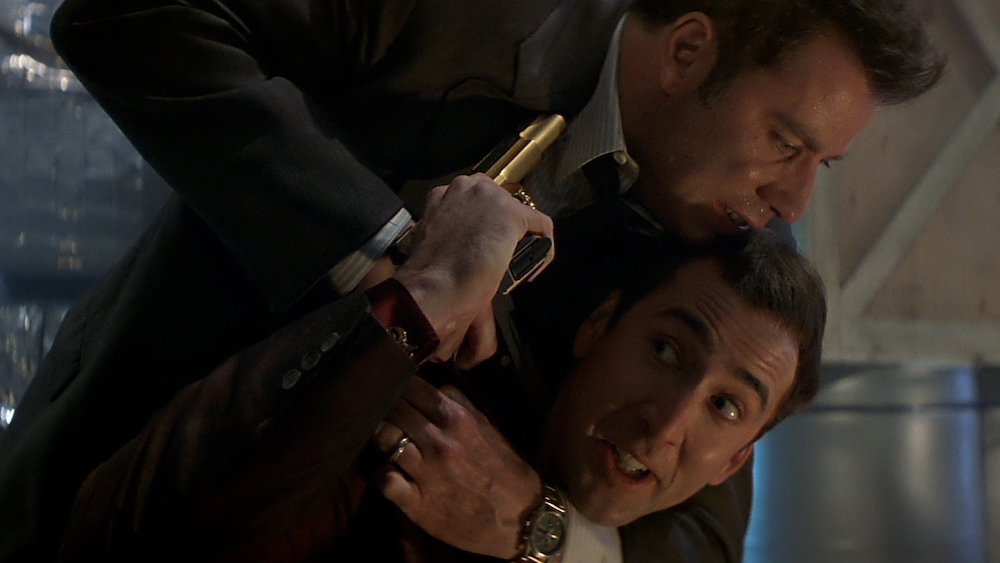
An R rating is often the kiss of death at the US box office, but on its June opening weekend, Face/Off lit up 2,621 screens across the country, making it a number 1 summer blockbuster. It grossed $23 million and therefore earned back a third of its $80m budget almost immediately. In the summer of ’97 it was up against an interesting mix of movies: Jurassic Park: The Lost World, The Fifth Element, Men in Black, Fly Away Home, Lost Highway, Shine, Batman and Robin, Tomorrow Never Dies, Air Force One, and Con Air — another R (for ridiculous?)-rated action movie starring Cage. It still managed to hold onto the number 11 slot in the US for the year and in total grossed $112 million.
Critical reception was generally very positive. Face/Off became one of the earlier releases on the new DVD format and, in 2008, Paramount Pictures also chose Face/Off as their debut Blu-ray release.
There are two sides to the film’s own backstory. The script was first written back in 1990, early in the careers of screenwriters Mike Werb and Michael Colleary. Warner Bros. were quick to pick it up, intending to cast Sylvester Stallone and Arnold Schwarzenegger in the lead roles, but as Werb explained, “Stallone was attached to Demolition Man, and they saw the two movies as being too similar.”
Face/Off sat on the shelf until the rights expired, then Paramount seized their chance. John Woo jumped aboard and dispensed with as much of the science fiction content as the plot would allow, intending to focus more on the story’s character and emotion, which he feared would be lost otherwise.
By then, Mike Werb and Michael Colleary had become frequent writing partners. They collaborated on The Mask (1994), Darkman III: Die Darkman Die (1996), and would go on to write Lara Croft, Tomb Raider (2001). Face/Off earned the duo the 1998 Academy of Science Fiction, Fantasy and Horror Films ‘Saturn Award’ for Best Writing.
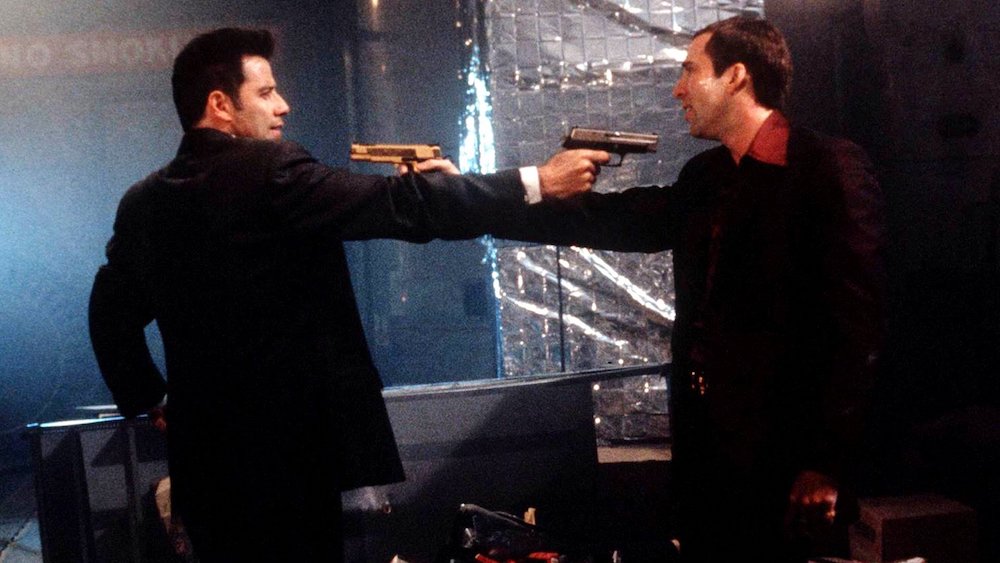
Director of Photography, Oliver Wood, makes everything look gorgeous. He honed his craft on the TV series Miami Vice in the 1980s, improving television production values and making small-screen expectations edge towards the cinematic. He had also worked on Die Hard 2 (1990) and went onto to another identity-swap movie, Freaky Friday (2003), before more recently photographing the Bourne franchise and 2016’s poorly received Ben-Hur remake.
Dominique Swain, who plays Jamie Archer, became the starlet to watch in 1997, after consolidated her rise by playing the title role of Lolita opposite Jeremy Irons. Later, she was to be reunited with Myles Jeffrey (who played Michael Archer), appearing together as siblings again in Tart (2001), and can currently be enjoyed in Fast and Fierce.
Travolta had started out with a promising resume in the 1970s (Carrie, Grease, Saturday Night Fever), and entered the 1980s with cult arthouse thriller Blow Out (1981), resurrected his role as Tony Manero for Staying Alive (1983), and then fell into a decline until Quentin Tarantino’s Pulp Fiction (1994) re-established him as a hip superstar. This led to his starring role in Broken Arrow (1996) for John Woo, who remembered him when Face/Off came his way. Since 1997, Travolta’s managed to chart a steady course at the movies, although his roles have been mostly forgettable since the sci-fi debacle Battlefield Earth (2000), and he’s recently made a promising turn to television with FX’s biographic drama American Crime Story.
Cage received an enviable career kick-start during the 1980s with a series of choice roles in cult movies: Rumble Fish (1983) and The Cotton Club (1984), both for Francis Ford Coppola, Alan Parker’s Birdy (1984), the Coen Brothers’ Raising Arizona (1987), and David Lynch’s Wild at Heart (1990). Since Face/Off he’s remained in demand and has continued to work in a variety of parts, including an unnecessary and unconvincing remake of The Wicker Man (2006), but it’s fair to say his career’s dwindled similarly to Travolta’s.
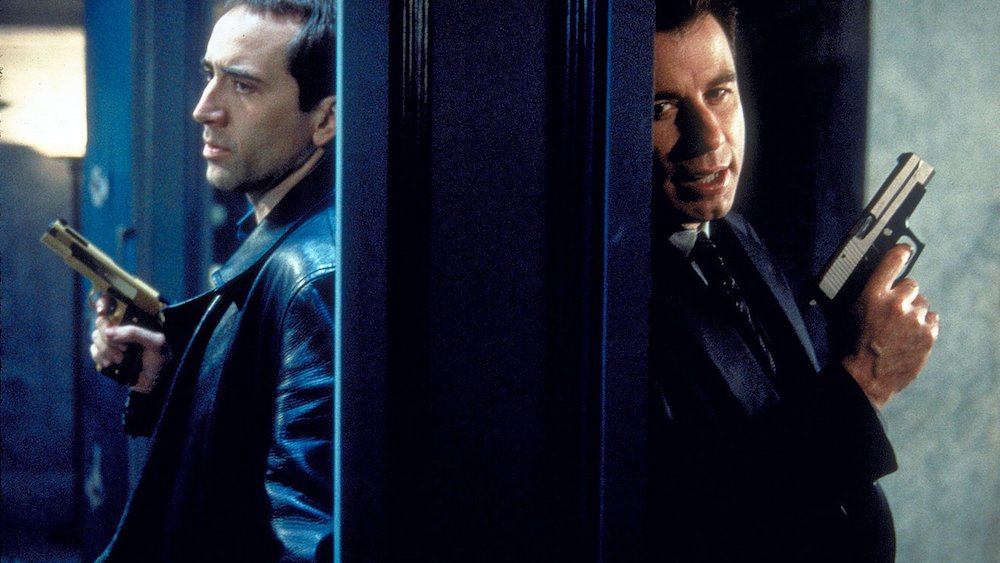
The kind of ultra-violent ballistic ballet of Face/Off is what had built John Woo’s reputation. The director already earned cult kudos with his Hong Kong thrillers, A Better Tomorrow (1986) — which was a significant influence on Tarantino’s Reservoir Dogs (1992) — The Killer (1989), and Hard Boiled (1992), in which action set-pieces become increasingly fantastical, involving gangsters decorating white designer interiors with Jackson Pollock style red arterial spray as they spin from the multiple impacts of machine gun fire. The rescue of Castor Troy’s son Adam (David McCurley) in Face/Off is a direct reference to the iconic scene in Hard Boiled when Chow Yun-fat rescues a baby during a spectacular shoot-out in a hospital.
It has been said that genre works through repetition with innovation. There needs to be enough recognisable scenarios and signifiers to satisfy audience expectations, but with innovation to freshen the formula.
Face/Off is a modern classic action-thriller, one of the few that can be aptly described as “high octane”, and yet there’s an intelligence at work, providing plenty of character between the action. It takes a lot of cues from some Noir classics: the identity-changing plastic surgery from the Bogart and Bacall vehicle, Dark Passage (1947), the family-ties and obsessed detective from Cry of the City (1948), and apparently Woo pointed Cage towards White Heat (1949) to absorb Cagney’s legendary performance.
It was only when catching-up with Kung Fu Hustle (2004), not so long ago, that it struck me why Face/Off still seemed so fresh. The films had something in common, but nothing to do with cast and crew, as far I as could tell. I am not saying which, but one is a thriller and one a comedy. Both are ludicrously action-driven, and so extreme that they can’t be taken seriously. Both are funny, despite gratuitous violence. I now realise the most significant thing John Woo achieved with Face/Off — he imported something of Hong Kong’s irreverent cinema sentiment and injected it into Hollywood like a much-needed vitamin boost. Hollywood action movies are still feeling the benefit.
